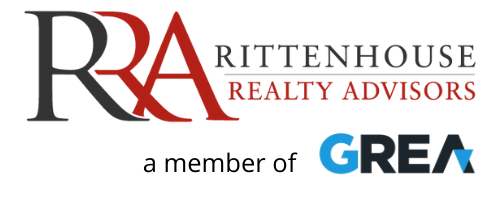Will The Multifamily Market Continue To Perform Despite Economic Challenges?

After a record-breaking 2021, the multifamily market was off to an explosive start earlier this year. Investment sales in the multifamily market in Q1 increased by 56% over Q1 2021, hitting $63B. This accounted for 37% of the total quarterly commercial real estate investment sales volume.
However, no market comes without its challenges. As fears of a recession loom, the multifamily market has started to cool off due to rising interest rates, inflation and supply chain delays.
That’s why CRE brokerage firms like Rittenhouse Realty Advisors, a member of Global Real Estate Advisors, or GREA, are remaining agile to help clients achieve their real estate goals despite today’s market challenges.
“We provide our clients with as much information as possible in the real estate market, both on a macro and micro level, so that we can educate them to make the best decisions for their properties,” said Corey Lonberger, managing partner of Rittenhouse Realty Advisors. “Whether it’s a sale, refinance or repositioning until interest rates settle down, acting as a point of reference for our clients is very important.”
Rittenhouse Realty Advisors is a commercial real estate brokerage based in Philadelphia. The firm offers multifamily brokerage, advisory, debt and equity services to its clients across the country. Founded in 2013, the firm has closed 415 multifamily, student housing and development site transitions.
To further expand its presence in the multifamily sector, Rittenhouse Realty Advisors combined its expertise with several partners from another real estate investment and finance firm to create GREA, a full-service CRE advisory and brokerage firm.
“We were initially talking to our partners about joining their platform and building an East Coast team together,” said Ken Wellar, managing partner at RRA. “After six months of talking, however, we all decided to create a new brand and new platform together: GREA.”
In 2021, GREA closed more than $4.5B in sales. With 11 offices across the country, the firm combines the expertise of more than 75 brokers nationwide.
Lonberger and Wellar said that on the investment side of the market, RRA’s biggest focus is sourcing deals with assumable debt.
“With the Federal Reserve increasing interest rates by 75 basis points for the fourth time since March, rates are much higher than they were at this time last year,” Wellar said. “As interest rates keep rising, it becomes harder for deals to pencil with brand-new debt. That’s why we’ve shifted a significant percentage of our focus to deals with assumable debt.”
While steep interest rate hikes may be discouraging to both investors and developers, demand remains strong, Lonberger said. In fact, CBRE predicts that multifamily occupancy will remain above 95% for the foreseeable future.
In addition to heightened demand, Wellar said national rent prices have seen overall growth this year. Though there are some markets that have plateaued or even slightly declined as the year approaches its end, RRA has seen overall rent grow by 7% to 15% in select markets.
Lonberger and Wellar said they are optimistic for the future of the multifamily market, though some investors and developers may still be wary of more potential economic challenges.
“One of the biggest challenges heading into next year is uncertainty in the debt markets,” Lonberger said. “It's harder to get a buyer to agree to a price on a deal when interest rates are in flux. We're dealing in a very volatile environment right now, and we don’t have a solid hold on where the new norm is going to be regarding interest rates. That's the biggest issue we're going to have to overcome moving forward.”
Wellar suggested another significant hurdle is the high cost of new development, driving up exit cap rates and lowering the amount of leverage lenders are willing to take on. For instance, if a borrower is looking at a 70% to 75% loan cost, proceeds are now getting cut down to 65% or even 50% on the cost for new development, which significantly affects the buyer's cash-on-cash return, Wellar said.
“Development will most likely end up slowing down because the financing will be tough,” Wellar said. “We think that people are going to wait until interest rates and construction costs come back down. Next year, rates will hopefully stabilize and we’ll have a greater sense of what the new normal will be.”
This article was produced in collaboration between Rittenhouse Realty Advisors and Studio B. Bisnow news staff was not involved in the production of this content.
Studio B is Bisnow’s in-house content and design studio. To learn more about how Studio B can help your team, reach out to studio@bisnow.com.

